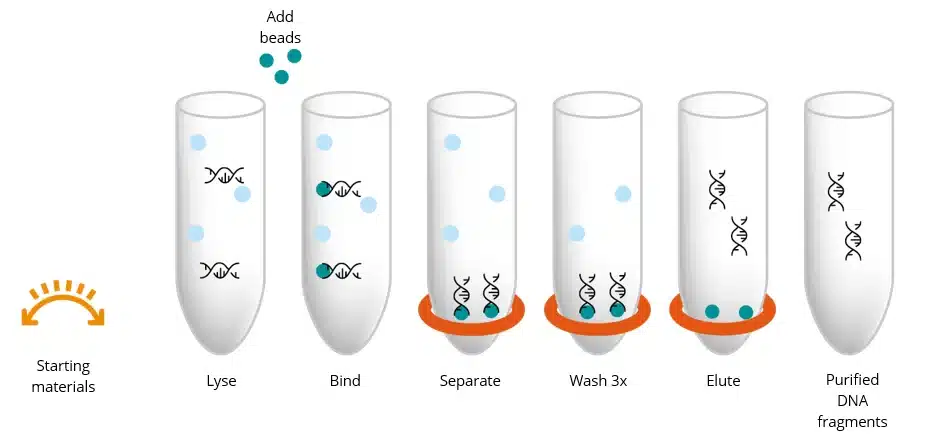Since the discovery of DNA, scientists have acquired tons of knowledge about the building blocks of life. Medicine has made great improvements with this information, but a major part of the functioning of our DNA is still a mystery. For better prevention and treatment of for example genetic diseases and cancer, more research is needed. We offer the Clean Blood & Tissue DNA Kit for a great start to your experiments.
The genomic DNA extraction kit does not require heating. It can process a high number of different sample types, such as fresh or frozen whole blood, buffy coat, saliva, cultured cells or up to 10 mg of tissue. EDTA, Citrate as well as Heparin Blood tubes can be used, and the high quality extracted DNA is immediately ready for downstream applications.
As for downstream applications, the extracted DNA can directly be used for (q)PCR. The research areas in which the kit can be used are very broad, such as cancer research, women’s health and clinical genetics. Development of personalized medicine, which can be applied for choosing the optimal dose and type of drugs for each patient, is also an important application area of the Clean Blood & Tissue DNA Kit.
CleanNA‘s Clean Blood & Tissue DNA Kit enables high quality DNA to be isolated that is suitable for direct use in most downstream applications. It can also be used for the CRISPR-Cas9 method.
The removal of all heating steps allows the Clean Blood DNA Kit to be easily implemented on liquid handling workstations (e.g. Beckman, Hamilton, Tecan, Caliper, Perkin Elmer, Agilent and Eppendorf).



There are no reviews yet. Be the first one to write one.
CleanNA
Coenecoop 75
2741 PH Waddinxveen
The Netherlands
V.A.T. – NL859255955B01
KVK – 72839511
T: +31 (0) 182 22 33 50
E: info@cleanna.com
Technical support
E: support@cleanna.com